Autism and Telepractice
Please enter a valid quantity
Please select a product format
That product is out of stock
BEFORE YOU BUY...
This course is one of more than 750+ CE courses in the ASHA Learning Pass, which gives you unlimited access to more than 1,350 hours of CE content for the cost of just one or two a la carte courses.
*If this is a recent SIG Perspectives course, you must also be a Special Interest Group (SIG) affiliate to unlock it as part of your subscription.
Already an ASHA Learning Pass subscriber?
Login
This SIG 1 Perspectives activity focuses on how to work with students with autism
spectrum disorders (ASD) and their caregivers via telepractice. The first article provides
five practical tips for supporting families of children with ASD while implementing
effective interventions via various telepractice modalities. The second article reviews the
feasibility of implementing telehealth programs related to behavioral interventions for
families and their children with ASD. The third article explores the usability of a webbased application of the JASPER social communication intervention. The fourth article
discusses the results of a survey completed by speech-language pathologists who
utilized telepractice to teach children with autism to access and use augmentative and
alternative communication devices. The final article shares current available research
related to the barriers of and solutions to conducting telehealth assessment and
interventions for families and their students with ASD.
Learning
Outcomes
You
will be able to:
- describe how to implement tools, develop culturally responsive relationships,
and use ethical and professional standards when engaging in telepractice
with families and children with ASD
- state possible adaptations to and the effects of caregiver competency when
delivering telehealth programming
- define the role of and methods for obtaining participant feedback through
usability testing
- list strategies for enhancing the effectiveness of telepractice for caregivers
and children learning to use and communicate with augmentative and
alternative communication devices
- describe the needs of and barriers for caregivers when participating in
telepractice
Assessment
Type
Self-assessment—Think
about what you learned and report on the Completion Form how you will use your
new knowledge.
Articles
in This Course
- Five Tips for Implementing Telepractice Interventions With Family Members of Young
Children With Autism Spectrum Disorder by Sarah N. Douglas, Sarah M. DunkelJackson, Atikah Bagawan, and Tiantian Sun, published in SIG 1, Volume 7, Issue 2,
April 2022
- Iterative Development of Caregiver-Implemented Behavioral Intervention via Telehealth:
A Focus on Feasibility by Leslie C. Neely, Amarie Carnett, Sarah Hansen, Meghan
Courtney, and Katherine Cantrell, published in SIG 1, Volume 7, Issue 2, April 2022
- Development and Usability Testing of a Web-Based Adaptation of the Joint Attention,
Symbolic Play, Engagement, and Regulation Social Communication Intervention by
Stephanie Y. Shire, Stacy Arbuckle, and Wenjing Bao, published in SIG 1, Volume 7, Issue 2, April 2022
- Voices From the Field: Strategies for Effective Telepractice for Children With Autism
Who Use Augmentative and Alternative Communication by Elizabeth E. Biggs, Michelle
C. S. Therrien, Melinda R. Snodgrass, and Sarah N. Douglas, published in SIG 1, Volume 7, Issue 2, April 2022
- Coaching Caregivers of Young Children With Autism via Telepractice to Collect
Assessment Data and Implement Interventions by James D. Lee, Christy D. Yoon, and
Hedda Meadan, published in SIG 1, Volume 7, Issue 2, April 2022
|

